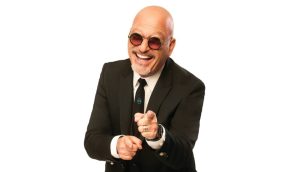While COVID-19 health concerns required Tim Horton’s to pivot quickly last year for its long-running Roll up the rim campaign, the ongoing pandemic triggered a new, increasingly digital effort for 2021 and the foreseeable future.
This year, the long-running promotion went fully digital, with customers playing not by rolling up to rim on a cup, but by scanning their Tims Rewards loyalty card or digitally through the QSR’s mobile app. It also got rid of the infamous “please play again” message, taking an “every player wins” approach.
The new campaign started on Mar. 8 and went with a full-funnel media approach until its completion on Apr. 4.
Previously, the campaign’s media mix was more awareness oriented, with top-of-the-funnel tactics designed to get people into physical locations to purchase their “roll up the rim” cups and try their luck. But now that the promotion was aimed more closely at driving adoption and engagement for its loyalty program and mobile app, there were new layers to the strategy on top of simple awareness. While there was still a sizeable TV, OOH and radio buy for broad awareness, Solange Bernard, senior head of marketing communications for Tim Horton’s at Restaurant Brands International, tells MiC that driving installs, registrations and engagement meant also using first party lists and targeting based on interest-based audiences.
Creative assets and media mix were based largely on where those audiences fell in the funnel, and were developed accordingly in partnership with Tim Horton’s creative agency, Zulu Alpha Kilo, and Horizon Media, which managed the media strategy. It used assets like Twitter’s “Like To Remind” (a single opt-in confirmation and Reminder Tweet at a later date to each person who opted in) and “Conversation Cards” (promoted image or video ads with CTA buttons and customizable hashtags that help prompt users to share or engage content) to drive consideration. Even on the awareness front, Tims skewed slightly digital with a Snapchat lens and Spotify microsite, Bernard says.
“Given the digital shift of Roll up to win, we wanted our media mix to skew heavily towards digital — about 25% of our spend was in digital channels, spanning traditional platforms like Facebook, Twitter, Snapchat and Google, as well as new partnerships with the likes of Spotify, TikTok, Pelmorex and Samsung,” Bernard says.
The nature of the pivot engendered a bigger digital investment, Bernard confirms, and while she wasn’t able to speak to how this year’s investment compares to previous spends, the main issue was the sheer volume of digital assets.
There were over 200 placements across digital and social channels, which included first-time activations on connect TV, Spotify, Twitch (pictured below) and in-feed TikTok promotions. They also ran placements on YouTube, Google, Snapchat, Twitter, Facebook and Instagram, along with Teads inRead units, Waze and Pelmorex (The Weather Network).
![TIM11880_RUTW_450x350_Twitch_E_Mockup[2]](https://cdn.mediaincanada.com/wp/wp-content/uploads/2021/04/tim11880_rutw_450x350_twitch_e_mockup2-622x176.jpg)
Tim Hortons also increased the prize pool this year, which also provided more media opportunities. Prize partners like Spotify and Sportsnet had strategic media buys within their platforms that featured creative contextual to their prizing – participants could win subscriptions to the streaming services.
There was concern from the outset around how the transition from a physical cup-based contest to a fully-digital experience would be received, Bernard says.
“But we saw a near-immediate adoption from our guests with a highly engaged audience. And to date, we’re excited to say that over 58 million prizes have been won.”























